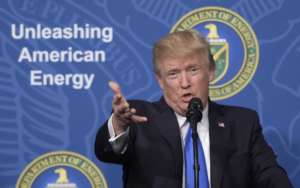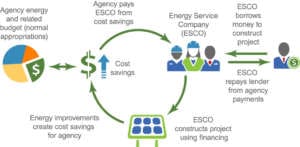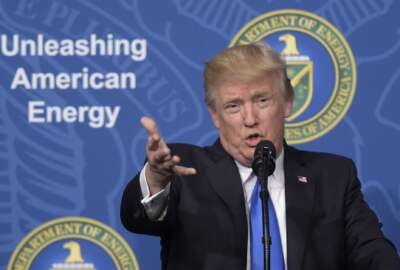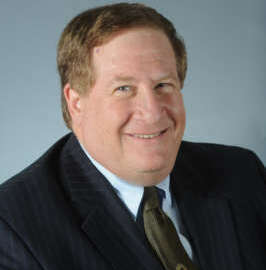
EO preserves energy efficiency goals for agencies but lacks deadlines
A new executive order echoes the Obama-era GreenGov initiative to make the federal government a leader in environmental sustainability uses less strict metrics for...
President Donald Trump still wants federal agencies to reduce energy costs and be environmentally sustainable — but how soon they do so is up for grabs.

Executive Order 13834, signed Thursday, directs agencies to “achieve and maintain annual reductions in building energy use and implement energy efficiency measures that reduce costs.” It echoed the principles of the Obama-era GreenGov initiative, which the Council on Environmental Quality began in 2009 to make the federal government a leader in environmental sustainability.
“The federal government manages more than 350,000 buildings and 600,000 vehicles and is the largest consumer of energy in the nation,” according to a fact sheet issued by the White House. “Last year, federal agencies spent more than $6 billion on energy for buildings and $635 million on water.”
The order called for progress metrics to be streamlined for greater flexibility on the part of agencies, and for the Council on Environmental Quality to launch a website with updated guidance for achieving energy and water efficiency.
But the latest EO is a departure from earlier directives in that it eliminates timetables for any goals. That includes the target of agencywide reductions of scope 1 and 2 and scope 3 greenhouse gas emissions in absolute terms by the end of fiscal 2025 relative to a fiscal year 2008 baseline, as outlined in EO 13693 signed in 2015.
That lack of specific dates concerned Nancy Sutley, the former CEQ chair and now the chief sustainability and economic development officer for the Los Angeles Department of Water and Power. Sutley led CEQ when GreenGov began.
“It’s good to see the administration reaffirming that this is a priority for federal agencies,” she said. “The bad news is it seems to lack ambition especially on the climate change.”
The EO makes one mention of greenhouse gas emissions but does not refer to climate change. Sutley also said she was disappointed the document did not push federal agencies to do more than the minimum.
But she agreed with the idea of making environmental sustainability metrics easier for agencies to understand, and said the initiatives were beneficial to the economy overall as well as to the federal budget.
Cost-neutral contracting pushed
The EO also encourages agencies to use energy saving performance contracting (ESPCs) as a way for agencies to make improvements to facilities and vehicles without up-front costs.
According to the Department of Energy, the contracts are awarded to energy service companies (ESCOs) which design and construct projects, as well as arrange the financing. The ESCO guarantees that the improvements will generate sufficient energy cost savings to pay for the project over the term of the contract and after that contract ends, the agency accrues the cost savings.

D.C.-based Ameresco Inc. has won 47 indefinite-delivery, indefinite-quantity energy saving performance contracts since 1999 — the most common type of ESPCs. The company has worked with most Defense Department agencies as well as the Federal Bureau of Prisons, Veterans Affairs Department, Agriculture and Interior departments, and the General Services Administration.
“There’s definitely a lot of agencies that utilize these vehicles and we’re excited to see it encouraged in the EO,” said Nicole Bulgarino, Ameresco executive vice president and general manager of federal solutions. “Even this year, they just don’t have the money [for some projects].”
Another ESCO, Johnson Controls in Milwaukee, Wisconsin, which is part of the Federal Performance Contracting Coalition, voiced its support for the EO’s language and timing.
“We are glad that the administration waited to revoke EO 13693 until they had a replacement and appreciate the commitment to continued reductions in energy and water use and the use of performance contracting,” FPCC said in a statement after Trump’s signing. “We also strongly support the continued existence and duties of a federal environmental executive, a steering committee, and chief sustainability officers at agencies as well as continued tracking of efforts related to this executive order.”
Bulgarino also praised the EO’s directive to keep tracking progress in energy efficiency, saying the resulting data will be beneficial for vendors trying to discern what agencies still need.
Sutley suspected that ESPCs may not be widely used if agencies do not understand their mechanics. But Bulgarino said she has probably seen more ESPCs used in the last five years than at any other time in the past two decades. She advised checking the DOE’s Federal Energy Management Program website for guidance.
“It’s been a very good vehicle, the goal being to try to do a comprehensive project” and meet energy efficiency needs, she said.
Copyright © 2025 Federal News Network. All rights reserved. This website is not intended for users located within the European Economic Area.
Amelia Brust is a digital editor at Federal News Network.
Follow @abrustWFED





